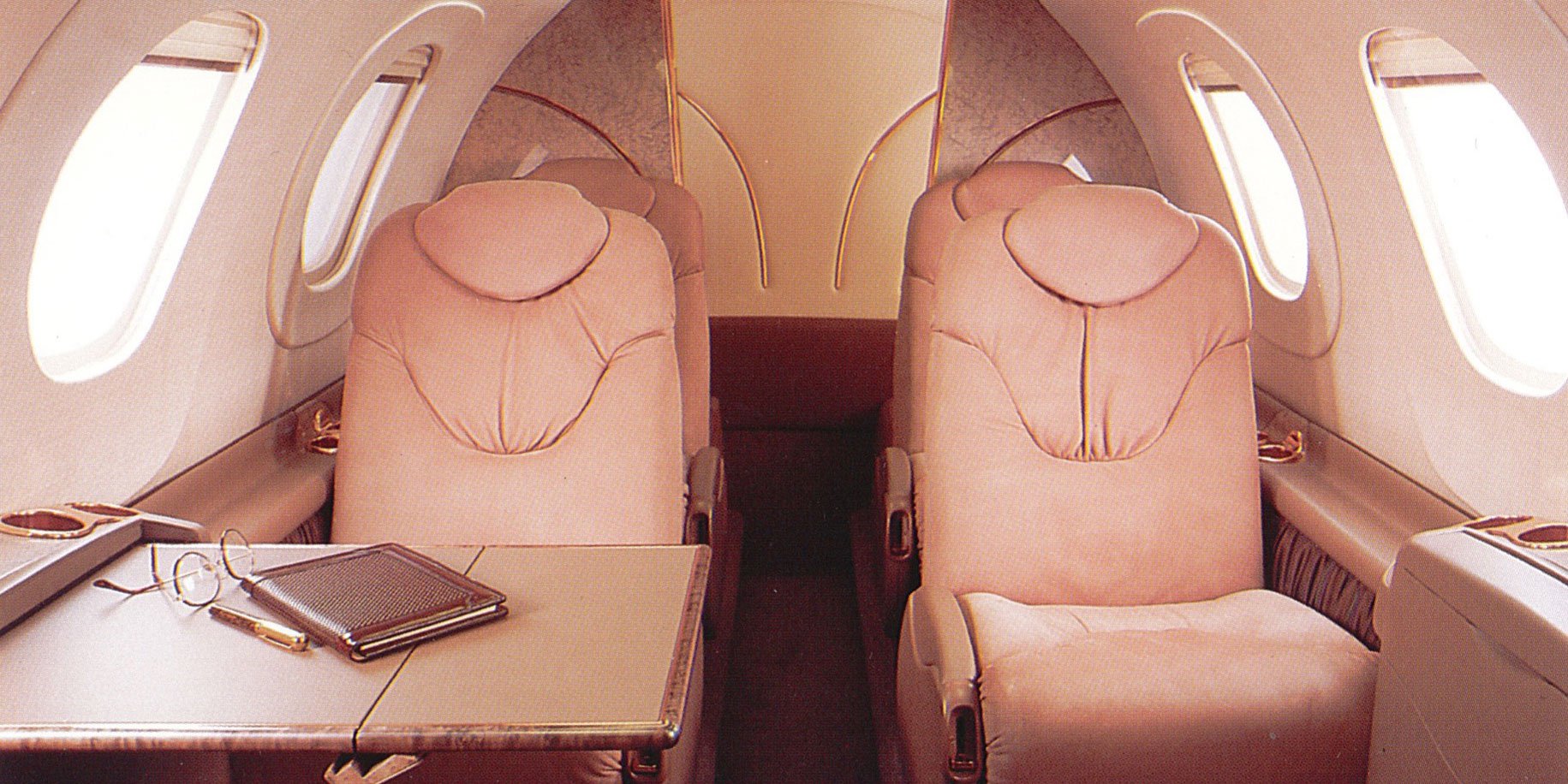History is chock full of aircraft said to have come before their time, with technologies or designs that only gained broad acceptance years after their introduction. Others might be considered more “outside” their time; it’s fair to say the Beechcraft Model 390 Premier I/IA leans toward the latter.
Certainly, the Model 390 looked promising when Beechcraft’s then-owner Raytheon committed to the program in the mid-nineties. The manufacturer leveraged its experience with composite construction from the ill-fated Starship to design a thoroughly modern, single-pilot business jet intended to compete against cross-town rival Cessna’s popular owner-flown CitationJet.
The jet that resulted is roughly the size of a Citation CJ2 and uses the same Williams FJ44 turbofans but with a nearly five-foot shorter wingspan contributing to higher cruising speeds. A two-tube Collins Pro Line 21 avionics panel came standard on the Premier I, with a three-screen system optional. The eight-passenger cabin is also larger than the CJ’s, with a 5.5-foot tall aisle providing nearly “stand-up” walking room.
The first Model 390 prototype flew in December 1998, with four aircraft used for certification testing, and the FAA bestowed its approval in March 2001. Despite promising specs, however, the Premier I’s entry into service was riddled with complications. Poor landing performance topped the list of owner complaints, attributed to twitchy brakes and a complex lift-dump system to negate ground effect from the speedy wing.

Operators also criticized early models’ excessive cabin noise levels and substandard (and decidedly non-Beech-like) assembly and fit-and-finish quality. Even the Premier I’s ramp presence came under some fire, to the point that aftermarket providers offered a painted-on fourth cabin “window” to visually balance the aircraft’s tall and somewhat stubby appearance.
Beechcraft answered most of these criticisms in 2006 with the updated Premier IA, featuring updated three-screen avionics, more consistent assembly quality and improved cabin design and materials, and—most needed—higher-performance brakes. Less than two years later, Beech announced the Premier II with more powerful engines and aerodynamic enhancements for greater range and performance.

However, the 2009 recession forced the slowdown of that program, with a rebranding as the Hawker 200 the only significant announcement before Hawker Beechcraft’s 2013 bankruptcy shuttered development for good. Ultimately, fewer than 300 Model 390s were built, and 204 remain on the FAA registry. Most are owner-flown, but there are a few in charter fleets.
A Quirky, but Roomy, ‘Hot Rod’
While the Model 390 proved to be more of a niche offering than a true CitationJet competitor, the aircraft does have a loyal following today. First and foremost, operators of the type applaud the plane’s performance.
Owner Greg Mink purchased his Premier IA from a European operator in September 2013 to replace a Mitsubishi MU-2 turboprop twin. “We looked at the CitationJet and CJ1 but the target range and speed difference [compared to] the MU-2 wasn’t all that significant,” he said.
While “there were also a lot of concerns [at the time] as Beechcraft had gone into bankruptcy and the market was depressed,” the Premier IA’s advantages won Mink over. Although the airplane “isn’t terribly range-y” at around 1,100 nm with NBAA reserves, he noted it suits his mission very well.
“From my home base in Indianapolis, you can make it anywhere on the east coast or south into Texas,” said Mink, who posts his flying adventures on YouTube as ‘Premier 1 Driver.’ “Heading west, you can grab fuel in Denver and then head to anywhere on the West Coast.
“And, best of all, it’s a hot rod,” he continued. “You’ll climb out at 220-240 knots. It’ll burn 420 pounds a side while cruising at Mach .78, with a nice, big cabin that’s really comfortable for passengers.” The higher wing loading compared to a Citation also smooths out most turbulence, he added.
That said, others note the airplane also has its share of unusual attributes relative to its primary light jet competition. “Everywhere you look on a Premier is something that is too complex,” said Maxim Goldstein, a pilot and instructor for a Part 91 aircraft management operation. (Goldstein also posts his flying experiences on YouTube as ‘Max Jet Review.’)
Goldstein pointed to the Premier’s external-mounted electronic fluid monitoring panel, replacing the simpler sight gauges used on other types. He also noted a propensity for “glitches” on initial startup after the airplane sits on a cold or rainy ramp. The aircraft’s composite fuselage may also complicate the replacement of antennas or receivers that must be bonded to the airframe with backing plates and strong epoxies.
“And let’s say I need to recharge the nitrogen for the emergency brake,” he added. “That’s a pretty common item. On a Citation, you can quickly access the port through the baggage compartment. The Premier requires you to disassemble quite a few panels to reach it.”
Despite these quirks, Goldstein also speaks highly of the aircraft’s performance. “It’s actually overpowered,” he stated. “Most times pilots want more power, but you don’t really feel that way in the Premier. There’s enough power for you to have to think about managing it properly.”
On takeoff, “you will need more runway than you would in a Citation,” Goldstein continued, “but on basically any day, even at ISA +10, you will still climb to [flight level] 410 with no problem. After an hour [your indicated airspeed] will be up against the barber pole. And the cabin is nice and roomy.”
The aircraft also represents a compelling value on the preowned market, with examples ranging from around $1.5 million to under $3 million. With the type now under the Textron Aviation umbrella, Mink noted maintenance hasn’t been a major issue.
“We really haven’t run into situations where we’ve been delayed for significant amounts of time waiting for parts,” he added. “There are plenty of service providers, the Williams engines are pretty darn reliable, [and] getting parts from Collins is never a problem.
“I really enjoy flying the airplane,” Mink concluded. “It really is a little time machine.”